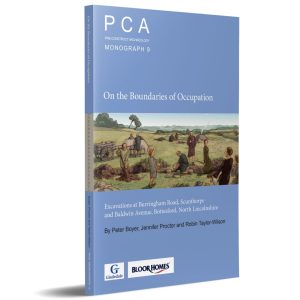Description
The area around Moor House was always wet and uninviting, crossed by numerous small tributaries of the Walbrook; but once the wall surrounding the Roman City of Londinium was built, conditions worsened, the flow of these streams was impeded and a marsh began to form, despite attempts at drainage. Wet conditions continued to dominate the area, known from the medieval period as the Moor or Moorfields, until the 16th century. This volume brings together the results of fieldwork conducted over six years, beyond the City wall on the edge of Moorfields.
Situated adjacent to the extensive Roman northern cemetery, the site presents evidence of alternative mortuary rites. The recovery of human long bones and skulls from within the numerous channels crossing the site hint at a continuation of pre-Roman traditions; the placing of selected skeletal elements into water, following exposure and excarnation.
Several bone skates were recovered from medieval features; it is documented that in the harsh winters of the late 12th century the flooded and frozen marshes of Moorfields were used as a skating rink for local youths. This marginal area was used as a dumping ground for waste, and the location of numerous foul-smelling industries such as tanning and tawing, and tenter grounds. A network of drainage channels constructed in the 13th and 14th centuries reflect attempts to manage the flooding and create watermeadows.
Ultimately attempts to tame the marsh succeeded and the area became increasingly populated. A large assemblage of wasters and kiln furniture from the backfill of a barrel well provide the first material evidence of a late 16th and early 17th century redware pottery production site.







There are no reviews yet.